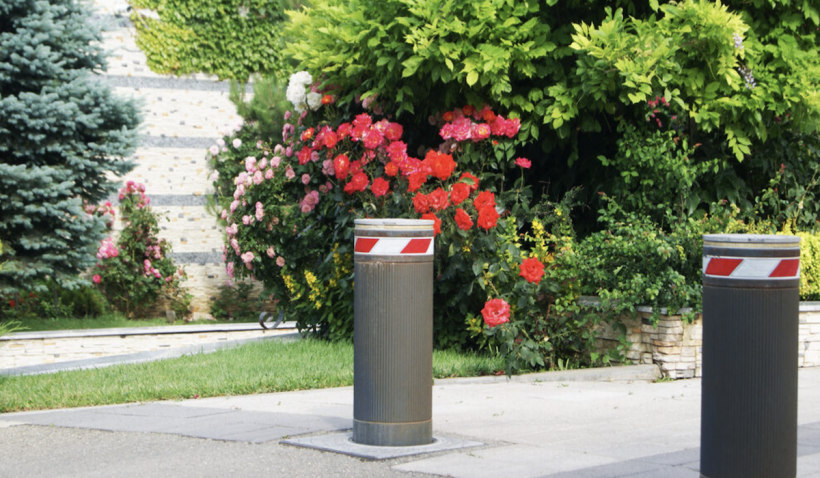Installing bollards at your business premises can be a great way of restricting unauthorised access, ensuring parking is appropriate and protecting pedestrians and property. There are a few different bollards available on the market, so here is our guide to some of the popular variants and use cases.
Materials
Cast iron is the traditional bollard material – it’s strong and it’s durable, acting as both a deterrent and a physical barrier to vehicles. Iron bollards need a little maintenance periodically to ensure they don’t rust.
Concrete is super sturdy and strong, and relatively cheap for bollard use. This is a permanent solution without the need for ongoing maintenance, however, concrete bollards have no flexibility for changing requirements, and they don’t look particularly stylish.
Wooden bollards can be a nice aesthetic choice, but don’t have the strength and stability of a concrete or iron bollard. Wood will need protection from rain to ensure it remains strong.
Stainless steel bollards have a good mix of strength, aesthetics, flexibility (you can get hinged, telescopic or removable ones to change the structure of your space) and need minimal maintenance as they are naturally water resistant.
Plastic bollards can be found in a range of colours, shapes and sizes, making them nicely versatile. A good quality plastic bollard (try to find ones that use 100% recycled materials where possible) will be resistant to temperature fluctuations, water, rust and rot, making them extremely long lasting. For added strength, you can often find plastic bollards with a steel core.
Placement
Protecting building or static equipment
The best bollards for this purpose are the strongest, fixed-in-place ones, so concrete or cast iron would be your preferred option here. The aim of the bollard is to prevent vehicles accidentally – or maliciously – from ramming into your building or equipment and causing huge damage/allowing for theft.
Vehicle management
These bollards are more of a deterrent than an immovable barrier – you’re looking to guide vehicles or prevent access, to protect buildings from impacts. Often, you’ll want these bollards to be removable so you can change the layout of your outside space when needed or allow certain vehicles access while denying it to others. Steel or wood bollards are your best choice for this use.
Pedestrian safety
Using bollards is a great way to improve pedestrian safety. You can put one at the head of parking spaces to ensure vehicles don’t go over and into walkways, and you can outline walking zones/pathways to reduce the chances of vehicles swerving into people. Any type of bollard is good for this use case, as it requires a mix of impact resistance and visual deterrent/warning. A good choice is a fixed bollard with a ring or hoop to allow for chains to be connected, making a long, consistent footpath protector. This will also allow you to manage pedestrian flow – ensuring people do not walk out into high-traffic areas.
Type
As mentioned, sometimes you might want different things from your bollards, as circumstances change or if you need to allow certain vehicles passage/parking. The five main types to choose from are:
Static/fixed
These are permanent fixtures, never allowing for change or movement. Typically bolted securely to the ground (surface mounted) or part-buried with foundations (sub-surface installation). The best choice for building protection.
Removable
These bollards can be taken away from their position as required – so if you are reserving parking, or only allowing delivery trucks through an area, these are a good cost-effective option.
Folding
This type of bollard has a hinge at the base, allowing it to fold down and lie on top of the ground. A good choice for reserved parking bays, as the bollard cannot be moved away or folded without a key.
Telescopic
Rather than being removed from their place, telescopic bollards can be compacted into themselves, becoming flush with the ground to allow passage over the top.
Automatic
These are the most technologically advanced. Similar to telescopic or folding bollards, rather than having to manually change the state of the bollard, you can do so remotely – by in-car sensor, remote control or gatehouse switch.
Laila Azzahra is a professional writer and blogger that loves to write about technology, business, entertainment, science, and health.
